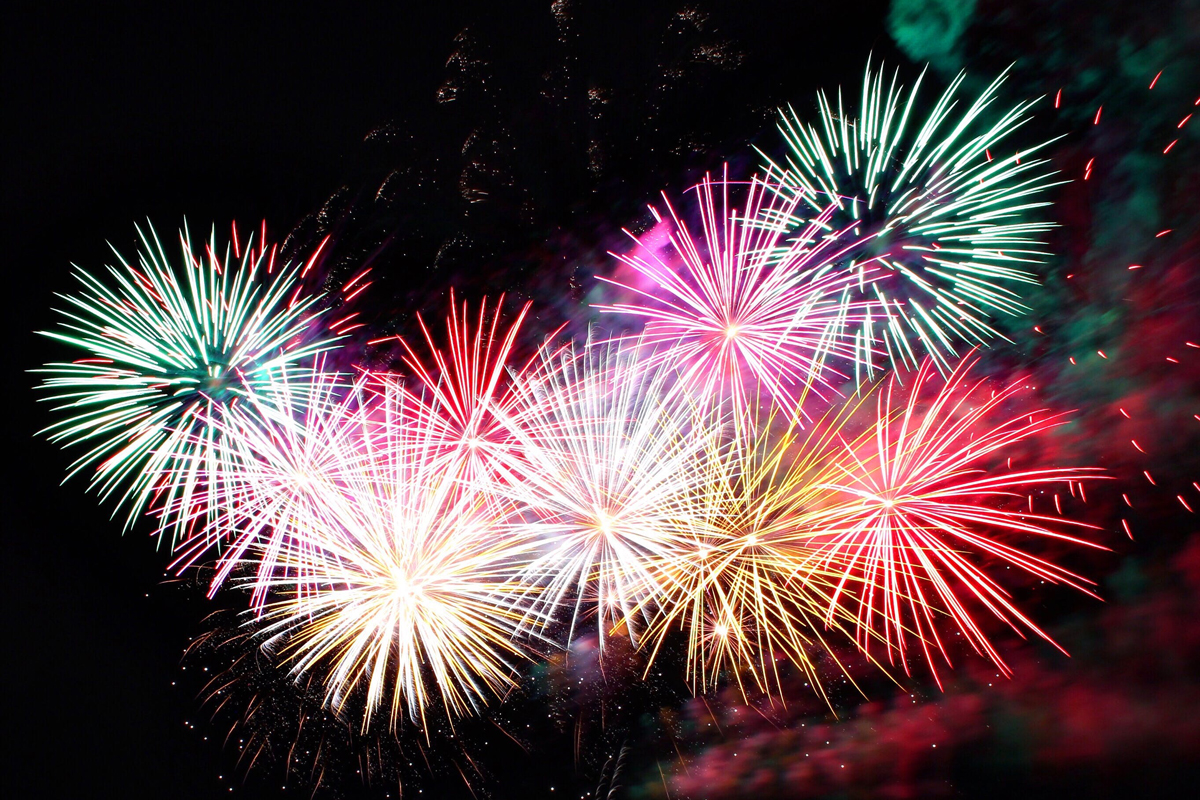Published January 4, 2024
The New Year is a time to reset, reflect…and celebrate! When you think of New Year’s celebrations here in the U.S., you might think of the ball drop in New York City, blowing noisemakers, toasting with champagne or sparkling juice, and maybe even sharing a little smooch with your loved ones. But have you ever wondered how other countries around the world celebrate the changing of the years? Let’s take a look at some New Year’s celebrations around the globe.
Spain
In Spain, people eat 12 grapes at midnight—one each time the clock chimes—which is supposed to bring them good luck for the new year. Food Republic explains that this tradition probably grew out of the French custom of eating grapes and drinking champagne on New Year’s Eve. There’s another theory that claims the tradition was started by a local winery trying to sell more grapes. But even if the origin is murky, this is a fun all-ages tradition (just be careful not to choke!).
Haiti
According to Smithsonian Magazine, when the French enslaved thousands of Africans on Haiti in the 17th and 18th centuries, the slaves weren’t allowed to eat a certain delicacy called soup joumou—even though they were the ones who prepared, cooked, and served it—because it was considered a status symbol by their white, French enslavers. So, when the Haitians declared independence from France on January 1, 1804, they celebrated by eating the previously forbidden soup joumou, and it has since become a symbol of their freedom. Now it’s customary for Haitians to enjoy this soup on New Year’s Day.
Puerto Rico
As Discover Puerto Rico explains, “Puerto Ricans clean their homes to start the New Year on a positive note, since they believe that will be the condition that prevails for the next 365 days.” So, you might want to get your family together and do the same. Break out the vacuum, clear the clutter, and make some donations. That way, you and your family can start 2024 with a clean slate, both literally and figuratively. Or, if you’re going to be anywhere near a beach on New Year’s Eve, you can fall backwards into the waves as the clock chimes midnight in order to keep bad spirits away—just like some Puerto Ricans do!
Ghana
The New Year’s customs in Ghana tend to vary regionally. Some people light fireworks. Others go to church. And the people of the town of Winneba participate in the Winneba Fancy Dress Festival, or Kakamotobi. As Atlas Obscura explains, this is a little bit like Mardi Gras in New Orleans, where you see fantastic, over-the-top costumes, performances, and music. The tradition dates back to when Dutch colonizers of coastal Ghana would dress up in masks and costumes on New Year’s Eve and party all night in white-owned bars. In the 1930s, the people of Winneba took this tradition to the streets and made it their very own.
Norway and Denmark
Do your kids have a sweet tooth? Does your family like to bake? If so, take a look at this recipe for Kransekake. This is an 18-layer cake that’s made out of a sugary almond dough, and is customary to eat on special occasions, including New Year’s Eve, in Norway and Denmark. According to TastingTable, the circular rings of the cake symbolize a year that’s coming full circle.
Ethiopia
In Ethiopia, they ring in their New Year—which actually takes place on September 11th (or September 12th in a leap year) with a public holiday called Enkutatash. The celebration has religious origins, so for some people, it begins with going to church. From there, they share a traditional meal, featuring flatbread with a special sauce. Then the children gather daisies, fashion them into a bouquet, and exchange the bouquets with friends. They close out the day by singing Ethiopian New Year’s songs, like the classic “Abebayehosh,” which you can listen to here: https://www.youtube.com/watch?v=zwLWRYqmlF4
Japan
The Japanese have several New Year’s traditions, one of which is hanging a decoration called shimekazari near their front doors. The ornament is made of sacred rice straw rope, pine, and bitter orange, which are said to ward off evil spirits and invite good fortune. Another traditional New Year decoration is the Kagami Mochi, which is a stack consisting of a larger rice cake on the bottom, a smaller rice cake in the middle, and a bitter orange on the top. The rice cakes represent the old year we’re leaving behind and the new year ahead, and the orange represents the continuation of the family through the generations. And the whole thing sits on top of a stand called a sanpō, which is supposed to ward off fires in the following year.
The United States
New Year’s traditions across the United States tend to vary a bit by region, but generally speaking, it’s a time to get together with friends and family, sing “Auld Lang Syne,” and toast with some sort of sparkling beverage. It’s also customary to turn on the TV and watch the ball drop in NYC’s Times Square. But instead of watching the ball drop, some cities have their own versions of the countdown to midnight. There’s the Chile Drop in Las Cruces, New Mexico; the MoonPie Drop in Mobile, Alabama; the Potato Drop in Boise, Idaho; the Dillsburg Pickle Drop in Dillsburg, Pennsylvania; and the Hershey’s Kiss Raise in Hershey, Pennsylvania.
However you and your family celebrate the New Year, we hope it’s happy and full of good fortune! Here’s to 2024!
Tags: 2024, happy new year, new year around the world, new year traditions